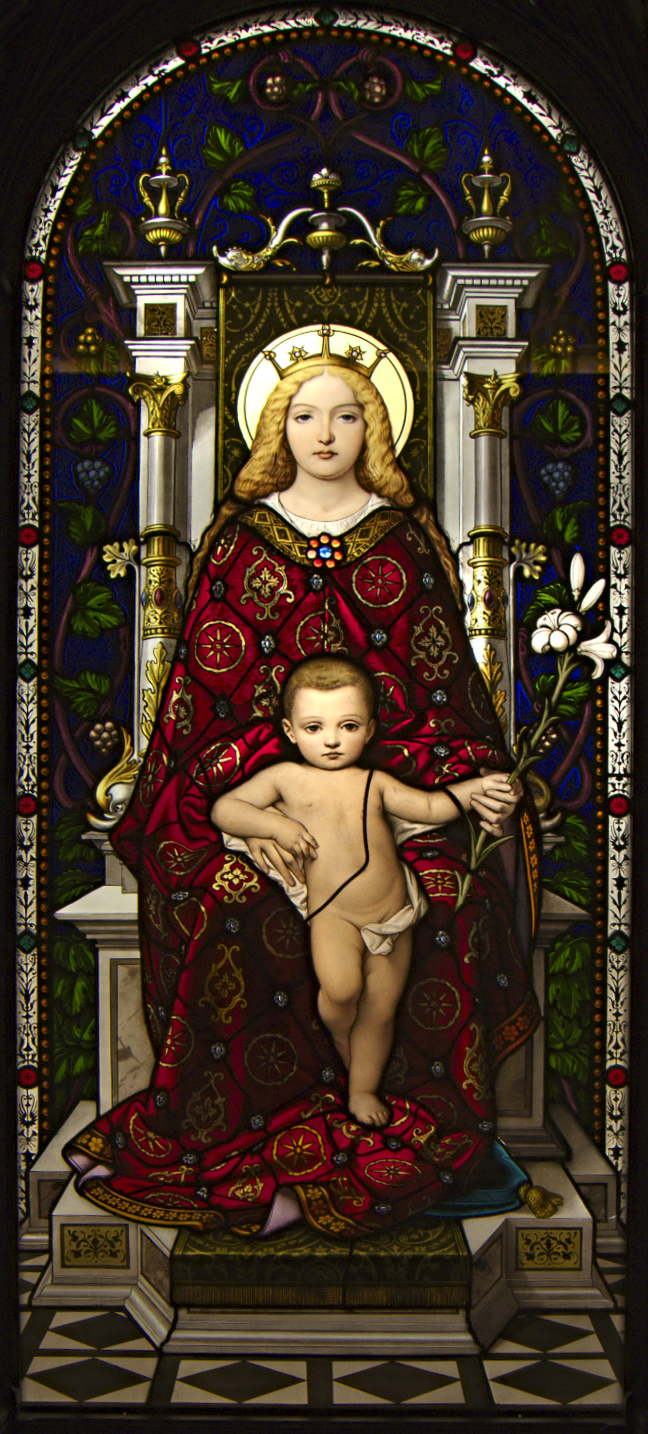
Mary: A Faith-Filled Woman
 “Bring flowers of the fairest, bring blossoms the rarest….”
“Bring flowers of the fairest, bring blossoms the rarest….”
Strains of this Marian hymn from my childhood float through my mind every May as soon as the tulips start to bloom. In the old days, of course, those tulips would have been collected, their stems carefully wrapped in waxed paper, and taken proudly to the teacher to be added to the collection in front of the statue of the Blessed Virgin, a statue that could be found in every Catholic classroom.
The Mary of my childhood was very much shaped by hymns and statues and popular culture. A young, beautiful, innocent mother, she was also as passive as the plaster statue we adorned with flowers.
With a little more life experience behind me now, I’m come to appreciate that Mary was anything but a submissive bystander. There’s a good reason why, if you take a closer look at Marian iconography, you’ll often find her foot is crushing a serpent! Mary was called to a life that demanded extraordinary courage and selflessness and sacrifice, and she more than fulfilled the requirements, demonstrating for us that God’s love is stronger than any evil.
While studying the Magnificat, (Lk.1:46-55) Mary’s response to the news that she is to be the Mother of God, I was struck when my professor described this moving canticle as having the rhythm of a battle cry. Hardly the kind of description we usually hear used about this beloved passage, but entirely apt when we reflect on the inversion of world order that comes with the kingdom of God. Mary’s response is not one of a simple girl who is a mere vessel, but that of a faith-filled, passionate young woman who understands that, in accepting the role of theotokos, or God-bearer, she will help fulfil the divine plan to restore goodness to the world, to bring down the powerful from their thrones and to lift up the lowly.
Now a mother myself, I know first-hand the challenges of pregnancy, and so I have new appreciation for just how brave Mary was in bearing Jesus in the face of what must have been a judgmental, critical climate.
A mother myself, I know that Mary must have recognized the dangers Jesus’ mission posed to him, and so I’m sure there was many a night that she lay awake, worried for him, and yet she supported him throughout.
Finally, a mother myself, I cannot imagine the pain of seeing a child suffer and die. But Mary, at the foot of the cross, is the same Mary whose faith is soon rewarded with the glorious news of the Resurrection, a wonderful reward for a woman who teaches us with her simple assertion, “let it be with me according to your word.”
All told, the name the childhood hymn offers Mary — Queen of the May — sounds pretty well deserved.
-Catherine Mulroney, Editor of Living with Christ, Canada’s Companion to Praying and Living the Eucharist

